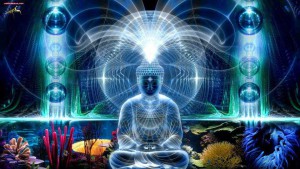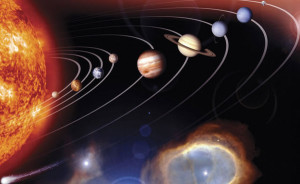“Musica Universalis” Theory by Pythagoras in Global & Human scope.
Historical Review: from Antiquity until 21st century
The paper questions the universal features of Music as well as the musical structure of the Universe in the framework of Pythagoras “Musica Universalis” theory and in the light of scientific discoveries from the 20th-21st centuries. It thus provides a thorough research on the notions of Music and Universe, their correlation and foundational qualities, revealing the communicative pattern of Music within global and human scope.
Although, the contribution of Pythagoras “musica universalis” to the science of speculative music has been thoroughly studied before and may have led to the rise of the “speculative music” itself, this phenomenon has not been viewed in both Eastern and Western perspectives and both global and human scope, as well as within the latest scientific discoveries.
Therefore, this research aims to consider the perception of music under the framework of Pythagoras “universal” concept through various historic periods including theoretical background of Antiquity and contemporary scientific discoveries in the sphere of sound and light concerning the notion of musical harmony and universal communicative feature of its sound. What`s more, the following research questions the correlation of “music” and “universe” in their link to human nature.
Statement of the Problem
This paper questions how Pythagoras “musica universalis” theory resounds through different periods. It examines the presence, development, and evolution of this concept in a number of scientific and academic studies from both Eastern and Western perspectives.
Purpose of the Study
Previous research in the field of “speculative music” has revealed the general acceptance of Pythagoras “music of the spheres” concept in different centuries. However, this study also aims to discover the “musica universalis” model from Eastern and Western perspectives by the means of textual analysis from both dimensions. Furthermore, it views the universal and musical aspects of the study alongside with their communicative properties and the human factor. The consideration of the latest scientific achievements from the 20th-21st centuries in this paper aims to conduct the research in a relevant and innovative manner and suggests a creative vision of “musica universalis” theory.
Significance of the Study
The research conducted bears the importance for the scientific world since it provides the global overview of Pythagoras “musica universalis” theory, not only in historical, but also in geographical and thematic perspective. Western theoretical documents are viewed alongside with Eastern philosophical visions – such an approach refines the existing knowledge in the field concerned with Pythagoras “musica universalis”. Global scope of textual analysis and data collection from various sources in the light of latest scientific discoveries extend the research conducted. The study also perceives the Pythagoras concept through the prism of “speculative music” and communication studies. It thus takes a broader look on the topic by questioning how “music” can generate various meanings and states of human nature, while being a universal mean of communication.
Research Questions:
How has the concept of Pythagoras “Musica Universalis” emerged and evolved in historical perspective? What are the relationships between music and Universe? From global – to human: “musica universalis” in relation to human being.
Literature Review
Carey and Frandlin (2005) examine the Pythagoras “musica universalis” theory within its historical evolution and in regard to human nature. Ancient writings of Plato, Aristotle, Iamblichus, study of Kepler’s “musica mundana” as well as more up-to-date works attest this concept. Authors mention the recently declared Vibrational Theory, according to which everything in the universe emanates certain vibration. This fundamental feature of the world establishes the link between human body, mind, and outer space as well as between music and universe.
Going further in their research, Carey and Frandlin (2005) prove this correlation on the ground of human biology, stating how individual body becomes the natural resonator for sound, consisting of approximately 70 % of water. By that the authors explain the great impact of music, its healing properties and explore the larger connection between Music and Universe, principles that govern our world and ourselves, and try to “weave them into a unified whole”, as it was once presented by Pythagoras in “Musica Universalis” theory (Carey & Frandlin, 2005, p. 316).
The musicologist and historian Joscelyn Godwin introduces the term of “speculative music” defining it as the branch of science, which identifies the musical principles. (1995) Furthermore, it “absorbs ideas from theosophy, Hermeticism, and the occult sciences” providing an esoteric viewpoint on music, and reveals “the hidden correspondences of nature; the secrets of number; the power of sound; and the moral responsibilities of a music that wields this power” (Godwin, 1995, p. 4). Concisely, speculative music regards the cosmos musically, and looks at music cosmically.
Godwin provides a deep insight into the Pythagoras “musica universalis” theory in his works viewing the cosmos as musical harmonious entity, which embodies the principle of “all in one”.
Crickmore (2013, p.7) undertakes an interdisciplinary research in the sphere of astronomy and speculative music to analyze the phenomenon of “musica universalis”. He states that the ‘harmony of the spheres’ concept, originating from Antiquity, “regarded the movements of the celestial bodies as a form of music”. It is important to note that such music was not usually considered as audible, but it was primarily respected as a harmonic and religious idea, which carried cosmological implications. This idea derived from the mathematics of tuning musical strings. It is thus important to note that “musica universalis” perceives music more from the esoteric, cosmological point of view.
Further in his article, Crickmore (2013) graphically and astronomically reveals the link between the names of the planets and days of the week, which were called in accordance with celestial bodies.
In his another scientific article, Crickmore (2003) introduces the major approaches to the music, which existed from ancient times. “Musica Mundana” and “Musica Humana” reflected cosmic and human categories of music. However, these two are in use as “poetic metaphors” of contemporary thought rather than subject of scientific research.
From the other perspective, there has been a keen interest in the science of harmonics within academic society – especially that of acoustics and mathematics. Crickmore suggests that it can be now necessary not to restrict the academic interest to specific areas of science but undertake more of the interdisciplinary research and to wonder whether harmonics can contribute to the exploration of possible connections between the development of the music and the human mind.
In her article, Richards (2003, p.30) introduces Pythagoras and describes his valuable breakthroughs in the science of music, which correlate with the latest scientific assertion that “everything vibrates”— “a discovery which became a turning-point for a new understanding of the universe”.
Being primarily an initiate and esoteric man, Pythagoras believed in the power of numbers, which regulated the most crucial musical phenomena (Richards, 2003). Although he inherited some knowledge from the sages of Egypt or Babylon, where he travelled to, his theory was very innovative and unique. Melanie Richards notices: “By assigning mathematical data as a basis for harmonious sound, Pythagoras was going against the persuasion of the day that pleasing harmony was merely a matter of taste and instinct.” (2003, p. 32)
What facilitated these discoveries? Allegedly, Pythagoras once heard different pitches, being produced by the striking of the anvils. At that point, he realized that the difference and the variation in pitches might had been created by the different weights of the hammers. This assertion encouraged Pythagoras to reveal the laws of harmony and acoustics further, and introduce the intervals by the means of the lyre and the monochord. This one-stringed instrument featured frets on the fingerboard at various lengths. By stopping the string exactly at the halfway point, he produced an octave, which was also a ratio of 1:2. By dividing the string into various other lengths, intervals of the fourth and fifth were produced, and so on. (Richards, 2003)
Pythagoras believed that the same distances or intervals and relationships that were in the action of the instrument should have also been present in space. As Richards (2003) states it:
Pythagoras…conceived of the universe as a vast lyre, in which each planet, vibrating at a specific pitch, in relationships similar to the stopping of the monochord’s string, harmonized with other heavenly bodies to create a “music of the spheres. (p. 31)
Susceptible to the harmony of the Universe, its order and mystery, Pythagoras stood at the point of the marriage of music, science, and mysticism, as James states in his book (1993). Author reflects upon the belief held during several centuries by scientists and philosophers that the universe is “a stately ordered mechanism, mathematical and musical” and the distances between celestial bodies have mirrored, and are mirrored by, the spaces between notes that form intervals, chords and scales. (James, 1993, p.241)
In his book, Khafizov (2009) provides a thorough review of history of the Mankind, regarding it as the chain of spiritual, cultural and intellectual achievements rather than the periods of wars and conquering fights. Pythagoras is one of the unique personalities in human history, whose thoughts developed the Mankind in general and pushed forward the world of science and philosophy.
Great philosopher approached his mathematical numerical findings from esoteric point and named the theory as “music of the spheres”, questioning the nature of the Universe. Unveiling the enigma of number and music and penetrating into the mystic knowledge, Pythagoras was first to establish connection between universe and music after he had revealed that both “cosmos” and “music” consist of numbers. (Khafizov, 2009)
As Khafizov states, belief that numbers express the real nature of the things around and are the symbolic reflection of life occurrences constitute the essence of Pythagoras’s teachings.
In his scientific article, Proust (2009) reveals the strong links between music and astronomy over 25 centuries. He introduces Greek concepts of music, namely theory of Pythagoras, who was one of the pioneers in “speculative music” science, which associates music and universe. Pythagoras perceived cosmos as “gigantic harmonic instrument of divine origin” with the conviction that planets move around the Earth giving off a sound and following certain orbits, which “numerical values” corresponded to such at the musical scale. Analogy between musical intervals and the spacing of the planets represented for Pythagoras the mystery of the world and sparked the birth of his “Musica Universalis” theory.
First established by Pythagoras in the framework of concise and accurate theory, it led to the number of discoveries and gained significance and great acceptance in following époques. It has ignited ruminations on itself throughout the Antiquity which include the tale “De Musica” of Plutarch (where the order and distance of planets were examined evoking the Pythagoras “harmony of the spheres”), the dissertation of Ptolemy on the harmonies, in which the different musical theories were scrupulously analyzed and compared with the harmony of the spheres. Accordingly, Cicero’s “Dream of Scipio”, into which Pythagoras ideas were incorporated, attest the influence of such on Roman culture. (Proust, 2009)
Intellectuals from the Middle Ages to the Renaissance tried to associate as strictly as possible the cosmos and music in order to show their perfect symbiosis and to proclaim the supreme order made by the Creator. Astronomers and mathematicians crossed their paths with musicians such as Bach, Haydn, Mozart, Shubert, up to contemporary composers in their revelation of universal laws found in music and beyond, as Proust asserts (2009).
For instance, Newton managed to split sunlight with the help of a prism, and allocated colors that he obtained from the spectrum to the seven notes of the scale:
Newton’s music of the spheres was thus enriched with a new tripartite framework which unified the 7 planets, the 7 notes and the 7 colours. (Proust, 2009, p.364)
Apparently, as Proust (2009) states it, being appealed by the cosmic “logos” people have been associated the harmonious undivided Universe with music throughout history.
Consequently, the Pythagoras theory has been receiving its approval and development in Western world throughout the ages. Furthermore, it also resounded in the Eastern culture, which the literature analysis below shows.
The large umbrella of yoga philosophy encompasses the vastness of the music practice and applies its effect in spiritual traditions. Practitioners denote “suratshabda yoga” or the Yoga of Inner Divine Sound” as the superlative category of devotion (Achyutanand, 2011) asserting the mystic properties of music, its ability to connect man with “heavenly spheres”.
Apparently, yogis believe that human body as well as the universe are imbued with musical properties and share the common “sound nature”. The reflection of this philosophy finds place in such indispensable aspects of yoga practice as mantras pronunciation and singing, which allows yogis to attain higher spiritual and better physical state by the power of sound and meditation.
Reference to meditation on the divine light and sound is found in ancient Yajurveda (Chapter 11, Man Dal 3) as cited by Achyutanand (2011):
May the seeker of Divine knowledge learn its secret from a True Guru, practice (meditation thus learnt) and perceive the divine light and sound within; may such seeker pray to God for getting such an accomplished Guru from whom this secret could be learnt! (p.53)
As Singh confirms, Surat Shabd Yoga is a form of spiritual practice. “Surat” means “attention,” or “face,” which is the outward expression of the soul, “shabd” means “word, logos” and yoga means “union.” (2003, p.1) The term “word” here means the “sound current”, the “audible life Stream” or the “Essence of the Absolute Supreme Being”. It signifies the dynamic force of creative energy that the Supreme Being sends out as sound vibration “into the abyss of space at the dawn of the universe’s manifestation”. This vibration, the sacred sound, is being sent forth constantly from then on, penetrating into the essence of the universe. (Singh, 1934, p.1)
The etymology of “Surat Shabd Yoga” according to Singh (1999) reflects its purpose, which is to attain the union of the Soul with the Essence of the Absolute Supreme Being. Other expressions for this type of spiritual practice include “The Path of Light and Sound”, “The Journey of Soul”, and “The Yoga of the Sound Current”.
Analogies to Pythagoras “Music of the Spheres” have been present in many traditions. Though differing in terminology, all these concepts share some common thought. For instance, in the Vedas the “Word” or sacred sound has been denoted as “Naad”, “Akash Bani”, and “Sruti”; in the Upanishads – “Nada” and “Udgit”; in the New Testament it is “Logos” and “Word”. Lao Tzu denotes it as “Tao”, Zoroaster as “Sraosha” while in the Qur’an similar to the “music of the spheres” concept is called “Kalma” and “Kalam-i-Qadim”. (World Heritage Encyclopedia, 2011)
Sat Gurus, (Sat – true, Guru – teacher) or the representatives of Surat Shabda Yoga teachings and philosophy include Lao Tsu, Jesus, Pythagoras, Socrates, Kabir, the Sufi Masters and mystic poets Hafez and Rumi, and others who studied the nature of sound, from spiritual and mystic side.
The purpose of Surat Shabda Yoga is true realization of one’s spiritual essence and divine nature while existing in physical body. The spiritual exercises (sadhanas) in Surat Shabda Yoga imply ‘simran’ (repetition, particularly silent repetition of a mantra given at initiation), ‘dhyan’ (concentration, viewing, or contemplation, particularly on the Inner Master), and ‘bhajan’ (listening to the inner sounds of the Shabd).’ (World Heritage Encyclopedia, 2011)
Accordingly, Sufis consider music an indispensable part of spiritual practice. As Khan (1983) states it, music has powerful healing effect on human organism, helps to restore the health, tuning the body and mind to the harmony.
We may now attest how Western and Eastern school of thoughts interpret, inherit and coincide with “harmony of the spheres” concept, proclaimed in Antiquity. Further in his paper Pont (2004) also examines the role of Pythagoras predecessors in the formation of “musica universalis” theory and how this concept resounds in contemporary world.
He states that the “harmony of the spheres” appeared with the reinterpretation of the system of harmonic proportions shared by macrocosm and microcosm. (Pont, 2004) Going further, Pont (2004) discusses the theories on music from Antiquity in their connection to art, architecture and science in various periods. The author concludes that Hellenic thought made a great contribution to the world of music and influenced many of the modern researchers.
Neo-pythagoreanism emerges nowadays as a “revival of musica speculative” (para.2) being present in the writings of scientist Joscelyn Godwin, of the French ‘neo-astrologer’ Michel Gauquelin, the English numerologist John Michell, and the English geneticist Rupert Sheldrake who introduced the theory of “morphic resonance”.
Another contemporary researcher, O’Hara (2011), also underlines the significance of Hellenic tradition: ancient philosophers and scholars were close to understanding of the world “because they were guided by the principles of heavenly harmony manifesting itself everywhere” (p.151). Such knowledge allowed them to look upon the world from the cosmic point of view.
O’Hara refers to the “heavenly rhythm of the Universe” stating that numbers surround us. He also questions the existence of universal language, which bases is the binary system.
Introducing the “language of virtual communication, which would be understood by any thinking being in the Universe” O’Hara (2011, pp.150-151) believes that “only digits, or numbers, can be universal and applicable anywhere irrespective of biological forms or substances”. The important point here is that “heavenly” spark in humans, as O’Hara puts it, cannot be “digitalized and introduced into a machine” such as artificial intelligence. Entire system of digital encoding is based on predictability and logic; therefore, the spontaneous human nature cannot be expressed by such system. (2011, p.150)
Alongside with these ideas, O’Hara states about “Voyager” spacecraft messages that carried Golden Records with musical selections from different nations and time periods including “pieces by Bach, Mozart, Beethoven, jazz, and folklore music”. (2011, p.145) He underlines that such messages may “eternalize” Humankind, reflecting the “evidence of its intelligence” when received and perceived accordingly by the inhabitants of the cosmos. (2011, p.146)
Interestingly, the process of “sound communication” seems to be reciprocal. For about half of the century have the astronomers wondered whether an “anomalous 72-second radio signal from space may have been an attempt by extraterrestrials to contact us” (Maclsaac, 2016). In 1977 astronomer Jerry Ehman looked at the printout of the radio telescope in Ohio: he saw unusual intense spike in radio waves and wrote the word “Wow” nearby it, giving the phenomenon its famous moniker of today.
Although the signal remains ciphered and not decoded, scientists claim that it could have been the type of communication from intelligent extraterrestrials. Signal was at nearly the same frequency as “the waves emitted by hydrogen atom changing states”. (Maclsaac, 2016) Radio telescope encoded it as the thread of following values and letters: 6EQJ5. Many researchers have tried to decipher this exact consequence and have generated peculiar theories. However, it is important to bear in mind that alleged extraterrestrials did not sent these values of “cryptic message”, if any. What they did, assumingly, was the signal, sent through the space and then captured by the Earth’s station, which listened to radio signals from the sky. Therefore, the observatory did not receive these values as a message.
The intensity of signal was recorded as a sequence of above mentioned values, where each character corresponded to about ten minutes of listening – it is the usual way of observatory charts construction (scales of 1 to 9, and A to Z reflect the intensity of the radio signal). Astronomic chart shows that the signal went from six to U (the most intense point), and then diminished back to five. Other usual signals have not been that much high and intensive, that’s why this exact “message” generated so much interest and astonishment being called “Wow!”.
Method
The research examines secondary data such as literature sources of Western and Eastern origin, which correspond to several historical periods (from Antiquity until the 21st century). It also investigates the video and audio recordings made by NASA spacecraft, and regards these astronomical observations in the framework of Pythagoras “musica universalis” theory.
Study thus applies qualitative content analysis in historical perspective, from both Eastern and Western angles.
Findings and conclusions were obtained through the analysis of above-mentioned sources, which included the revelation of common thematic, practical and theoretic points within them: application of music to the universe, the perception of musical harmony in global and human scope. Research results in the invention of the paradigm, which basis consists in the innovative approach to the notions of “music” and “universe” as well as contains commonly accepted views about the subject of the study.
Results
As earlier investigation has shown, some researchers refer to the “musica universalis” concept by Pythagoras as to the subject of studies for “speculative music” (Goldwin, 1996; Crickmore, 2013). Moreover, one may say that Pythagoras was the first to launch “speculative music” science itself, evoking ruminations on music in universal scope besides revealing the laws of musical sounds, which are intertwined with theory and practice.
Many philosophers and scientists developed the theory invented by Pythagoras, and it remains viable up to nowadays with the latest scientific breakthroughs. Paradigm established further in this paper also proves the significance of ancient knowledge, which finds its place in modern thinking.
Music – Universe – Human
The previous statement, found in the scientific work by O’Hara (2011), leads to the broader scope of “Music and Universe” research, introducing the third element – that of Human. It is the Human, who produces the music and perceives the Universe. Although, human perception of “music” does not always correspond to the sounds produced by the planets, constellations of stars in the “universe”. However, such fact does not contradict to “Musica Universalis” theory. On the contrary, this concept regards music exactly from mathematical perspective, where sounds attain musical harmony through their numerical beauty and perfection, as Crickmore also states it (2013). Because the musical correlations such as ratios and intervals can be also applicable to the distances the planets form, to their orbits of motion, one may proclaim “musica universalis” as a theory, which views music and universe to be of the same nature.
Musical Universe
Latest scientific astronomical researches have proved the fact that universe produces electromagnetic waves and sounds, which frequency is less than 1 Hz, however. Thus, human beings cannot hear them. (NASA Space Sound, 2010). By the means of supersensitive equipment NASA team obtained several audio recordings from space and transferred them to the range of frequencies that human ear can perceive. Content of these recordings do not necessarily reflect the correlation between “music of the universe” and human perception of “harmony”. However, the existence of such cosmic sounds, or planetary music, scientifically proves the theory introduced by Pythagoras back in Antiquity.
Music – Universe – Mean of Communication
“WOW” phenomenon analyzed above in this paper makes it possible to suggest the music being the mean of communication, or at least the sound produced at certain frequency with specified rhythm and pitch.
Although O’Hara mainly introduces the system of information exchange based on the light, questioning the existence of universal language, the use of the numerical or vibrational type of communication may imply such of the music, too. This vision finds place in modern science as well as in O’Hara’s analysis, partially: “WOW” signal, considered as vibrational message from the extraterrestrial intelligence, and, on the other side, earthly attempt to send the representation of the Humanity encoded in the Golden Records of the Voyager spacecraft, allows viewing music as indispensable part in communication with “heavenly spheres”.
Despite the fact that the majority of the evidences cited hereby refer to the music as to the “vibration” or “sound”, they are useful for understanding the universal nature of music and its semantic power. Perhaps, the alien mind has encoded certain meaning in such sounds as “WOW” and, alternatively, the whole music, which may one day come to us from above, can contain the messages from other civilizations that speak through the certain harmony of the spheres, or numerical values….
“WOW” phenomenon in particular shows that extraterrestrials may have tried to communicate with the Earth by means of radio signals, which are certain vibration in their essence. The intensity of the sound, its frequency decipherment can be the keys to unlocking the doors of “extraterrestrial” world, and understanding the “music of the spheres”, the communicative power of the sound better.
Music, in general, speaks with “numbers” of the Universe, mathematical notions, absolute values, and universal constants on the one side – and has an impact on “emotions”, feelings, thoughts and notions of the Human Nature, on the other side.
What’s more, human mind is able to perceive that heavenly rhythm of the Universe, be it the light or the vibration of the sound as O’Hara states (2011).
This refers us back to the Eastern tradition of viewing sound as part of spiritual practice, meditation and escalation to wisdom and harmony. Any information, which forms our world and ourselves, is emission of light in its essence. The light is the wave, the number, or the symbol. Whereas symbols, within certain rhythm, constitute what we call music.
Notes can be referred as symbols that produce sound waves, have certain frequencies and pitches, and are of numerical values. Symbolic guidelines (notes, metronome indications, tempo, etc) are applicable to the music, which then produces certain meaning, caused by vibration of sound, creates emotional response, evoking joy or sadness. Music affects emotionally, mentally, physically; and being a unique form of communication transfers certain meanings, encoded in it.
Perception of music and sound in Eastern and Western traditions
Review of literature sources from both Eastern and Western perspectives enabled to reveal the correspondence of one to another. Ancient Hellenic and modern Western traditions are intertwined with the Eastern ones, both from past and present in their regard to Pythagoras theory.
Delving into the origin of the word “yoga”, one reveals the link between “universe” and “man”: yoga means being in the union with the God, or Supreme Consciousness, i.e. the Universe in some sense. This state cannot be reached without the means of the sound, that of every mantra, according to yoga traditions. (Achyutanand, 2011)
An important reference can be made to the Bible teachings in this respect: the Word was at the beginning of the World creation, and the God was the Word. In other terms, the Sound has laid the foundation of the Being, the vibration has constituted the nature of our universe. In accordance with these western believes has the sound been considered “divine” and sacred, ever-existing and all-permeating, in yoga practice and philosophy, too.
Thus, we encounter hereby another, more abstract, spiritual and philosophical, interpretation of “musica universalis” from Eastern, Indian, perspective.
“Musica Universalis” resounds in both parts of the world, underlining common features of their philosophical, spiritual aspects, and sacred knowledge. Such findings may have the historic explanation: historians suggest that Pythagoras traveled to the Eastern countries such as Babylon and Egypt where he partially obtained education from the local sages. (Khafizov, 2007; Richards, 2013)
It can be therefore possible that some of the knowledge, which Pythagoras inherited from the East, sparked the idea of “musica universalis” in his mind. It can be also the reason why the “harmony of the spheres” concept, which emerged in Antiquity, strikingly finds place in yogic “surat shabd” rituals as well as in Sufism tradition.
Many philosophers, scientists, and researchers get inspired by “musica universalis” theory; becoming Pythagoreans in certain sense, confirm the “universal” feature of the music and “musical” vision of the cosmos. The omnipresence of this vision, which reflects upon the mystery of both music and universe, in many traditions can stem from the appealing, inspiring, poetically beautiful and intuitively as well as scientifically truthful nature of such, too.
Discussion
Common vibrational structure of the Universe and the Man justifies the healing properties of the sound and music on human nature, also underlining their communicative aspect. The union of the Universe and the Music on the ground of their mutual vibrational and numerical nature lies in the foundation of the “Musica Universalis” theory, analyzed in this paper.
Paradigm, introduced as a result of the research, encourages to see “musica universalis” on both cosmic and human scale. Questioning the way by which the individual can express certain emotions and evoke them in another creature, one may conclude that vibration constitute the power of music. By the means of vibrations, human being communicates the very subtle, gentle, challenging notions, reflecting his soul. Mysterious influence of music has been a subject of interest throughout different stages of the history, referring us to Pythagoras and his concept of “heavenly music”.
“The Music of the Spheres”, or the concept of the universal harmonies, traced back to 6th century BC and attested to Pythagoras claims that sounds are subject to mathematical proportions, and represent the very foundation of the universe. However, these principles of music exist within the human nature, since it belongs to the Universe and constitutes the part of it, as well. Same rhythms, vibrations, and proportions found in the space are attested within us. Pythagoras, accordingly, believed that each soul carries an imprint of the creator and has a correspondingly sounding planet, allocated to it. (Khafizov, 2007)
Similarly, biologists and researchers of human organism proved that our cells actually “sing”, emit certain information so that neighboring cells “hear”, are affected by, and respond to them. Even the word “organ” means “instrument” or “tool”, and refers to body parts as well as musical instruments. Using the “atomic force microscope” scientists can nowadays record this internal music of our organism and conclude whether it is in healthy, harmonious “symphony”, or in the “cacophony” of illness and disharmony. (Trussell, retrieved in 2017)
Music is the language that communicates from within our microcosm to the macro-level of our Being, the Universe. Mysterious, existing apart of the consciousness, soul can communicate with its source of origin, the Universe, in the language of music. This is one of the main reasons for “universal” capacity of music.
Etymological and semantic analysis confirms that Unity is the pattern of the Universe. Accordingly, Universe is something that has One law or One major vibration and harmony. “Uni”-verse changes, world around us resonates to our thoughts and words, which are vibrations in their essence, too. Common vibrational nature of our essence and the world around reasons the possibility of such change. Going further in this research, it would be logical to suggest the same character of relationship between music and the universe in regard to the human being. The persisting element of human influence on both of the aspects proves the musical nature of the universe and universal nature of music, accordingly. The meanings induced by them are “versatile”, in their turn dependent on what our perceptions, thoughts, wishes and levels of consciousness are. Thus, the meaning of every sound, every color, every thought or occurrence depend on our perception. It varies from person to person. So are the music and the universe – they are both varying in regard to the human being.
The way one plays the chord, takes the notes, or the content of meanings one embeds in sounds “pronounced” changes the music. Accordingly, the perception of the Universe – i.e. the world around – may change depending on the “music” of individual mind, soul, and body. Music of the inner state can change the Music of higher spheres; thoughts and emotions can resound within the world of both human and universal scope.
The paradigm of three “M”s establishes this link between Macrocosm and Microcosm, which are united through Music. Theoretical background back from Antiquity up until discoveries of the 21st century may provide a valuable proof to it.
For the Pythagoreans, both music and the human soul share a basis in number. Every person has own individual note with which the complete planetary system resonates and is consonant with, being allocated to that person from the birth. Pythagoreans believed that the human soul originates from the “heaven” and thus both consisted of common features. (Khafizov, 2007, p.194)
Accordingly, as Richards (2007) states, Pythagoras was convinced that “human organism would respond in various ways” to mathematical relationships and ratios found in music and universe: “Certain rhythms, scales, and songs were used to heal the body and soothe the passions.” (p. 34)
Here, on this Earth “every human being is like a tuning fork whose mind picks up the echoes of the absolute language of the Universe inside himself thus achieving harmony with the Absolute”. (O’Hara, 2011, p.141) It is how the Microcosm – Macrocosm – and all-penetrating Music – are weaved together to create the Unity and Harmony of what we call Universe.
Conclusion
One can regard music as a unifying element between cultures, people, traditions, and entities: not only on the Earth but also in the Universe as a whole. Music contains in its structure the same numerical values, proportions, intervals as the Universe does. Reflecting the mysterious harmony of the world, human origin, and cosmic nature, it embeds harmonic proportions, laws, which are present throughout time and space. Music communicates feelings, thoughts that even language cannot: we do not only understand and intuitively read the mind of Beethoven or Bach by listening to their music, but we can feel their inner states, by perceiving the harmonious entity of their chéf-d-oeuvres, for instance.
What else can evoke emotions to such an extent? What can be more effective in transmitting certain states of living nature and consciousness throughout the Universe? Several generations of musicologists, researchers, philosophers and music amateurs proved the figurative, expressive, and communicative nature of music.
The Mystery of Microcosm, Macrocosm, and Music has been the major impetus for the research conducted hereby. Questions raised are still open for further discussions and research. However, the research reflected the strong and mysterious connection between Universe, Man and Music, which exists on both human and global scopes, throughout the millennia, in different historic periods and schools of thought.
The view of Pythagoras “musica universalis” theory through various historic and theoretical perspectives has asserted its shining wisdom, appeal, and significance in the world of modern science. Recalling what the great sages of the past stated about music and its role in the life, we might know agree with their concepts and theories, even in the light of the latest scientific discoveries of the 20th-21st century.
“There is geometry in the humming of the strings, there is music in the spacing of the spheres”, indeed (Pythagoras). Accordingly, the assertion of Plato that “music gives a soul to the universe, wings to the mind, flight to the imagination and life to everything” is true to certain extent, too. Last but not least, Lao Tzu`s statement about “music in the soul” that “can be heard by the Universe” makes us think again of the connection between Music, Microcosm of Human Soul and Macrocosm of the Universe, which was introduced as the paradigm of three M-s in this paper.
Recommendations
Due to the several limitations in the research conducted hereby such as time constraints, concentration on specific thematic angle, professional background with specialization in exact field of study, many facets of the “Musica Universalis” theory remain unexplored and left for further studies.
Alongside with Pythagoras’s concept, effect of music in general, its healing and communicative properties may present an interesting field for research.
In addition, the study of frequencies affecting human beings in different ways through the overview of cymatics science achievements and contemporary discoveries in the field of physics, astronomy, and sound healing are also thought-provoking themes for the further studies.
References
Achyutanand, S. (2011), Adhyātma, P. (ed.) Yoga of Inner Light and Sound. Spiritual
Quarterly Published from Maharshi Santsevi Dhyan Yogashram, Kolkata, India
Carey, D. & Franldin, E. (2005) From Galaxies to Cells: Bridging Science, Sound Vibration
and Consciousness Through the Music of the Spheres. Subtle Energies & Energy Medicine Journal Archives 16 (3), 2005 Available at: http://journals.sfu.ca/seemj/index.php/seemj/article/view/61
Crickmore, L. (2013) Planets, Heptachords and the Days of the Week – the Harmony of the
Spheres. Available at:
Godwin, J. (1995) Music and the Occult: French Musical Philosophies 1750-1950. New
York, University of Rochester Press.
Godwin, J. (1992) Harmony of the Spheres, A Sourcebook of the Pythagorean tradition in
music. Inner Traditions Publisher
James, J. (1993) The Music of the Spheres: Music, Science, and the Natural Order of the
Universe. 4. New York: Copernicus, an imprint of Springer-Verlag New York, by arrangement with Grove Press.
Khafizov, A. (2009) The Ancient History of the Mankind in the Light of Latest Scientific
Discoveries Vol.2 (Chapter 7: “First Mystic Philosophical Community”) Dom Pechati Publishing House, Kazan. Published in Russian, translated by Khafizou, T.
Khan, H.I. (1983) The Music of Life. Omega Publications, New Lebanon, NY
NASA Space Sounds (2010) Available at: https://youtu.be/-MmWeZHsQzs
O’Hara, K. (2011) From Runic Symbols to the Language of the Universe. Publishing House
Dom Pechati, Kazan
Pont, G. (2004, Spring) Philosophy and Science of Music in Ancient Greece: The
Predecessors of Pythagoras and their Contribution. Nexus Network Journal, 6 (1) Available at: http://www.nexusjournal.com/filename.html
Proust, D. (2009) D. Valls-Gabaud & A. Boksenberg, eds.. The Harmony of the Spheres from
Pythagoras to Voyager. Observatory of Paris, International Astronomical Union, 2011. The Role of Astronomy in Society and Culture Proceedings IAU Symposium No. 260 Available at: http://dx.doi.org/10.1017/S1743921311002535
Maclsaac, T. (January 14, 2016), Article: Mysterious “WOW!” signal from Space
Deciphered, Says Astronomer. The Epoch Times. Available at: http://www.theepochtimes.com/n3/1941547-mysterious-wow-signal-from-space-deciphered-says-astronomer/
Richards, M. (2009) Pythagoras and Music. S.R.C. Rosicrucian Digest 87 (1) Available at:
https://rosicrucian.org/rosicrucian-digest-pythagoreans
Singh, S. D. (1934). Sar Bachan: An abstract of the teachings of Soami Ji Maharaj, the
founder of the Radha Soami system of philosophy and spiritual science: The yoga of the Sound Current. Translated from Hindi to English by Seva Singh with Julian Johnson. (9th ed.) Beas, India: Radha Soami Satsang Beas.
Singh, K. (2003) Morning Talks, (“Righteousness – Detachment – Self-
restraint.”) Ruhani Satsang, (7th ed.)
Singh, K. (1999) Naam or Word. Blaine, WA: Ruhani Satsang Books. Book 2: Shabd. The
Sound Principle.
Surat Shabd Yoga (2011). World Heritage Encyclopedia. Available at:
http://self.gutenberg.org/articles/surat_shabd_yoga
Trussell, D. (retrieved in January 9, 2017) Singing Cells. Science and the Music of the Human
Body. Unimed Living. Available at: www.unimedliving.com/the-science-of-music/singing-cells-science-and-the-music-of-the-human-body-part-2.html





 Creating certain words, human being encoded in them his own perception of the world around, now denoted by words – i.e, certain combinations of sounds and letters. Primordially with the words did the man strive to convey the sacred essence of occurrences and get the gist of them, having heard and processed the words. This sacred meaning is kept within the word structure up until nowadays.
Creating certain words, human being encoded in them his own perception of the world around, now denoted by words – i.e, certain combinations of sounds and letters. Primordially with the words did the man strive to convey the sacred essence of occurrences and get the gist of them, having heard and processed the words. This sacred meaning is kept within the word structure up until nowadays.
 It came out that such a title was given not only to a simple gift shop. It was a real studio, where its owner, Mr Akcan, created marvelous works of applied art.
It came out that such a title was given not only to a simple gift shop. It was a real studio, where its owner, Mr Akcan, created marvelous works of applied art. Book sparked an obvious interest by its content as well as the origin. It is such a rare sight – to meet an author of the book, not even stirring a step from the bookshelf. And, what`s more unusual, to meet writer from Cyprus. As citizens of this island, my family and me were happy to make acquaintance with noble representative of native population and expressed our honor to Erol Akcan, writer and local master of arts and craft.
Book sparked an obvious interest by its content as well as the origin. It is such a rare sight – to meet an author of the book, not even stirring a step from the bookshelf. And, what`s more unusual, to meet writer from Cyprus. As citizens of this island, my family and me were happy to make acquaintance with noble representative of native population and expressed our honor to Erol Akcan, writer and local master of arts and craft.


 The motive of capital`s history is as much solemn and rich as other melodies of gorgeous Viennese Symphony. It traces own roots back to dim and distant past, giving us the possibility to ruminate on the legends of by-gone years, etymology of the capital`s name, and precursors of modern cultural heritage. This history deserves a special article. Whereas we will just note that Vienna was founded in nearly 1st century BC on Danube River and it is one of the most ancient European cities.
The motive of capital`s history is as much solemn and rich as other melodies of gorgeous Viennese Symphony. It traces own roots back to dim and distant past, giving us the possibility to ruminate on the legends of by-gone years, etymology of the capital`s name, and precursors of modern cultural heritage. This history deserves a special article. Whereas we will just note that Vienna was founded in nearly 1st century BC on Danube River and it is one of the most ancient European cities. The life of Vienna is intertwined with Oriental world up to now. By some quirk of fate, Austria, having resisted the pressure of the Turkish with lasting success, now is in partial occupancy of them. About 70% of all taxi-drivers in Vienna are Turks, they are also the owners of some leading restaurants and shops. So, with the knowledge of Turkish language you won`t get lost here, indeed! Turks, who have settled and work in Austria, appreciate the order, cleanness, calmness and security that are characteristic to this marvellous country.
The life of Vienna is intertwined with Oriental world up to now. By some quirk of fate, Austria, having resisted the pressure of the Turkish with lasting success, now is in partial occupancy of them. About 70% of all taxi-drivers in Vienna are Turks, they are also the owners of some leading restaurants and shops. So, with the knowledge of Turkish language you won`t get lost here, indeed! Turks, who have settled and work in Austria, appreciate the order, cleanness, calmness and security that are characteristic to this marvellous country.

 By the height of this horn, which is more than 2 meters long, one can estimate the impressive size of its owner…. Considered as antidote, «horns of unicorns» were exhibited in cabinets of curiosities and pharmacies of Renaissance epoch. They were sold all over Europe for mints of money.
By the height of this horn, which is more than 2 meters long, one can estimate the impressive size of its owner…. Considered as antidote, «horns of unicorns» were exhibited in cabinets of curiosities and pharmacies of Renaissance epoch. They were sold all over Europe for mints of money.



